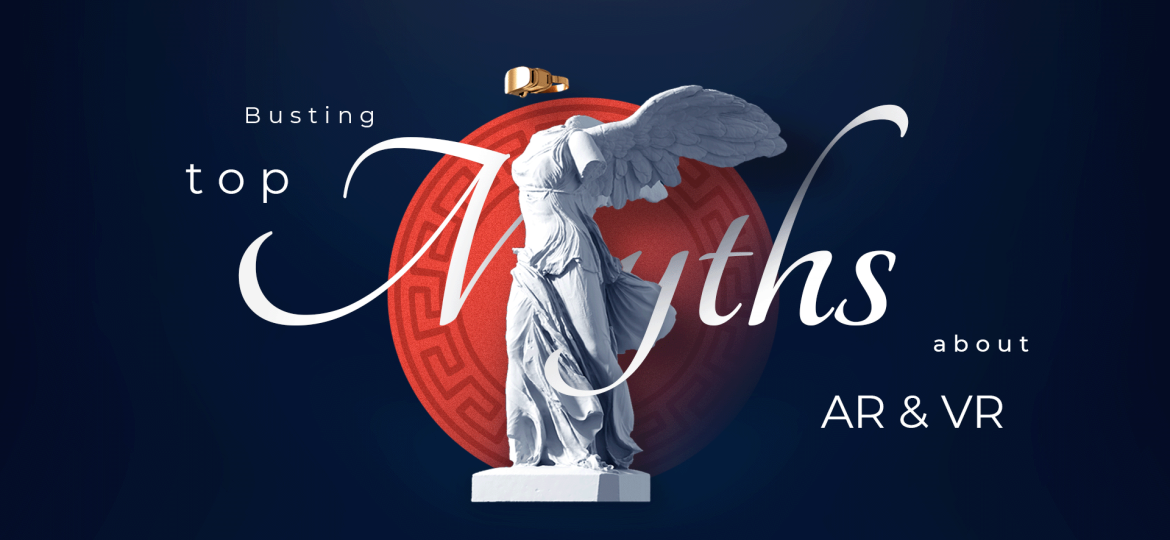
Businesses worldwide find it fascinating to consider the possibility of experiencing a whole new, digitized environment with all their senses.You may also consider making the VR or AR leap for your business but are still trying to figure out a few things. There are more and more myths floating around concerning augmented reality (AR) and virtual reality (VR) as they gain popularity with each passing day. In this article, PROVEN Reality aims to bust any myths and misconceptions you may have about virtual reality (VR) and augmented reality (AR) to alleviate any of your concerns. Read on.
Debunking myths surrounding VR
Virtual reality (VR) is here to stay and impacts many aspects of daily life. However, many hesitate to take the VR leap due to some misconceptions we would like to address and dispel below.
VR is only for games and entertainment
It is undeniable that virtual reality is widely spread in the gaming sector, but this technology shows immense possibilities in healthcare, education, retail, design, tourism, and many other industries. We at PROVEN reality work with healthcare experts to bring ground-breaking solutions in healthcare and medical skills training. Our clients use our patient examination app to perform physical manipulations, ranging from the lab and diagnostic analyses to lung and heart examinations.
VR solutions are too expensive
Not all VR will cost a fortune as it once did, particularly if you are trying to scale software at a training facility. It can be a cost-effective and sustainable technology that is available to everyone. From an institutional aspect, VR enables simulations to be offered at lower costs with fewer resources, according to a study based on the change in medical education brought about by VR. The benefits can be quantitative, such as reducing errors, improving patient safety, and demonstrating competence quicker, or qualitative, such as improving student engagement and satisfaction and generating interest among prospective students.
VR is counter-productive
Unquestionably, the quality of virtual reality depends on what is being offered. However, it is significant to note that the aviation industry acknowledges VR-based simulation as a major contributor to a nearly 50% reduction in human error-related aircraft crashes since the 1970s. VR is beyond just a video game. It simulates real-world experiences to help people perform better in those situations.
Augmented reality myths and realities
The user’s physical environment can become interactive and digitally manipulable thanks to augmented reality (AR) technologies. AR is dramatically advancing into the commercial sphere thanks to its capability to enhance real-world objects with computer-generated perceptual information.
AR is a gimmick that will pass
There is a general opinion that AR is a gimmick and that we will eventually identify it as such. This is far from the truth, at least as per the data. By now, augmented reality would have passed out of style if it were a fad.
Over 120 million smartphones are projected to be available at the end of 2022 that can run augmented reality (AR) applications, according to a Gartner study. By 2025, that number will increase to 6.2 billion. The biggest international brands are researching, creating, and manufacturing AR. Why would you not want to be able to bring your items to life in front of your customer if you were McDonald’s or Nike, after all?
AR consumes too much data
AR is perceived as a new method of using the internet. It was viewed as an app for locating objects, locations, and other online information but is displayed in real-time using your device’s camera. This led many people to believe that the entire point of augmented reality is to use data from the internet and show it in the real environment. Although most augmented reality apps use this strategy, other applications do too. Furthermore, augmented reality apps can also access data from any source, like APIs or web services, instead of being limited to internet data. As a result, AR apps are much more versatile than they appear at first glance.
The is no difference between AR and VR
The degree of immersion is the main difference between augmented and virtual reality. You are submerged in the virtual reality environment. You can interact with things, take a 360-degree view of your surroundings, and peer around corners.
With augmented reality, you remain in the real world while interacting with a layer of information over what you see, such as looking at a skyscraper to see how many stories it has or looking at a street sign to get directions. This translates to consumers experiencing “screen presence” in an AR environment and “immersion” in a VR environment.
Final thoughts
There are a lot of potential myths that can be busted when it comes to these two ground-breaking technologies. Once you learn how things work in the AR and VR world, you will be able to take advantage of it. Discovering and exploring are at the core of science, so there’s no better time than now to start.
It is better to be a part of the emerging technology space and become a game-changer rather than sit idly and allow your competitors to take the lead.
Contact PROVEN Reality for more information.

